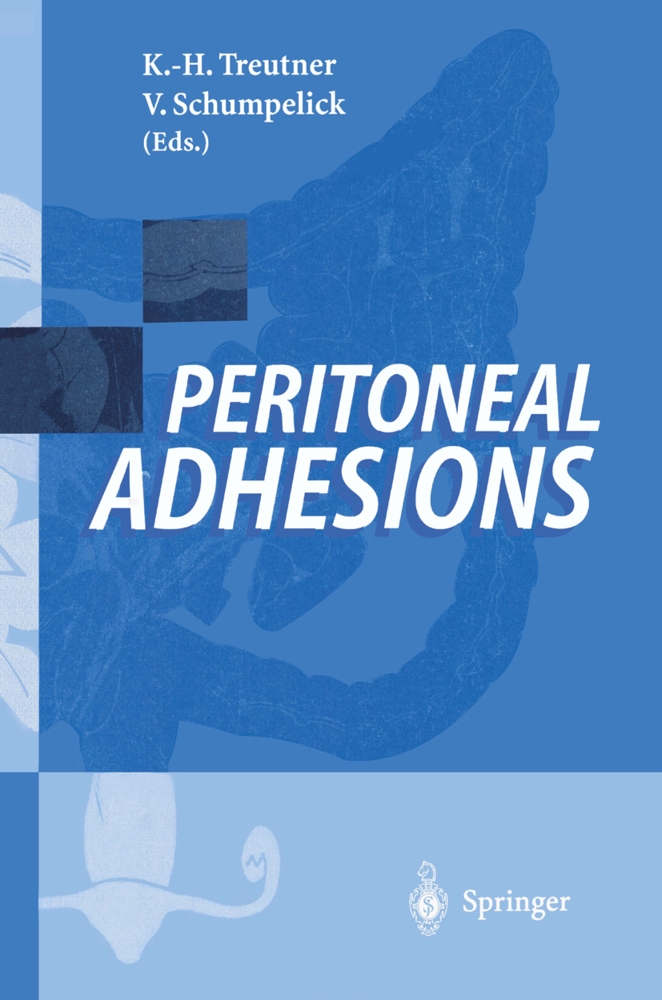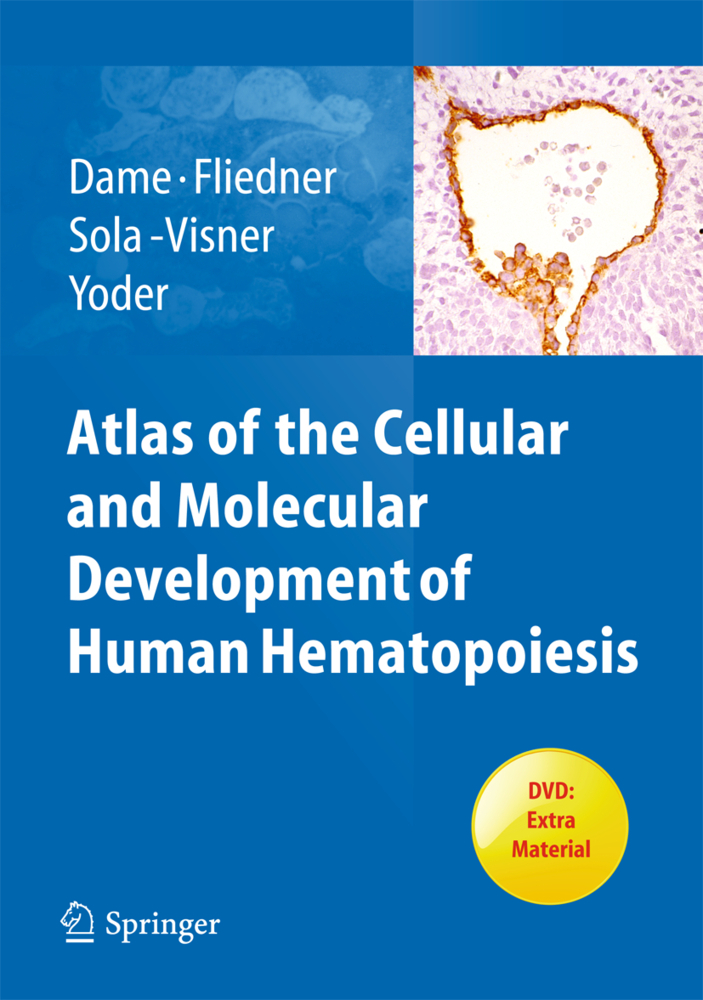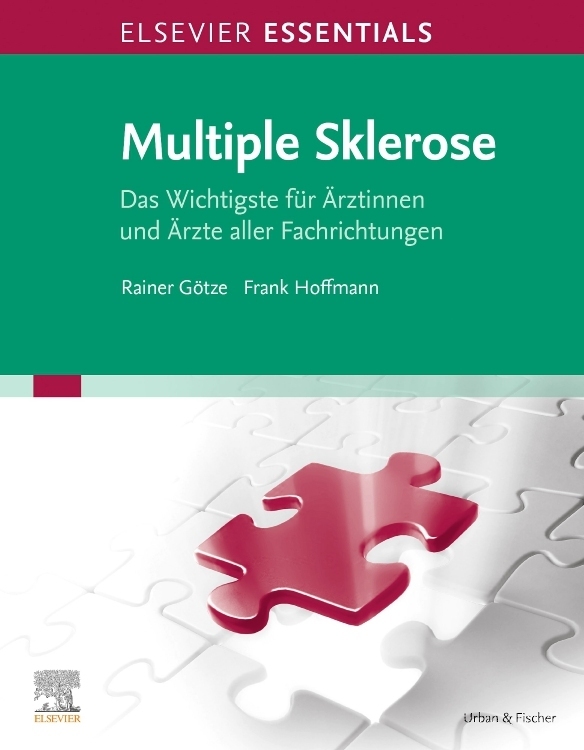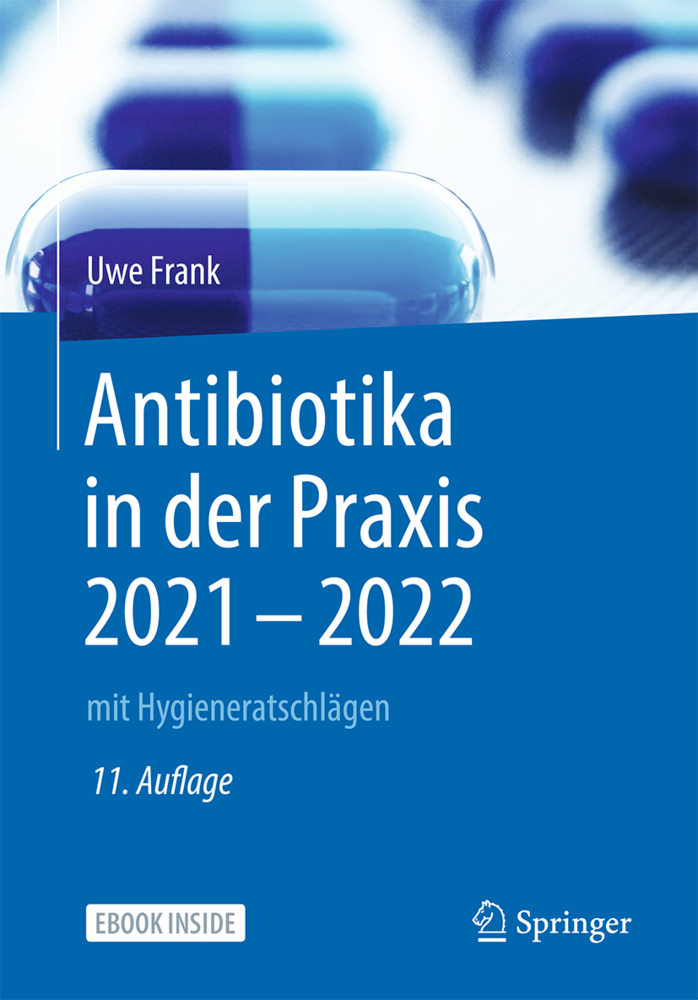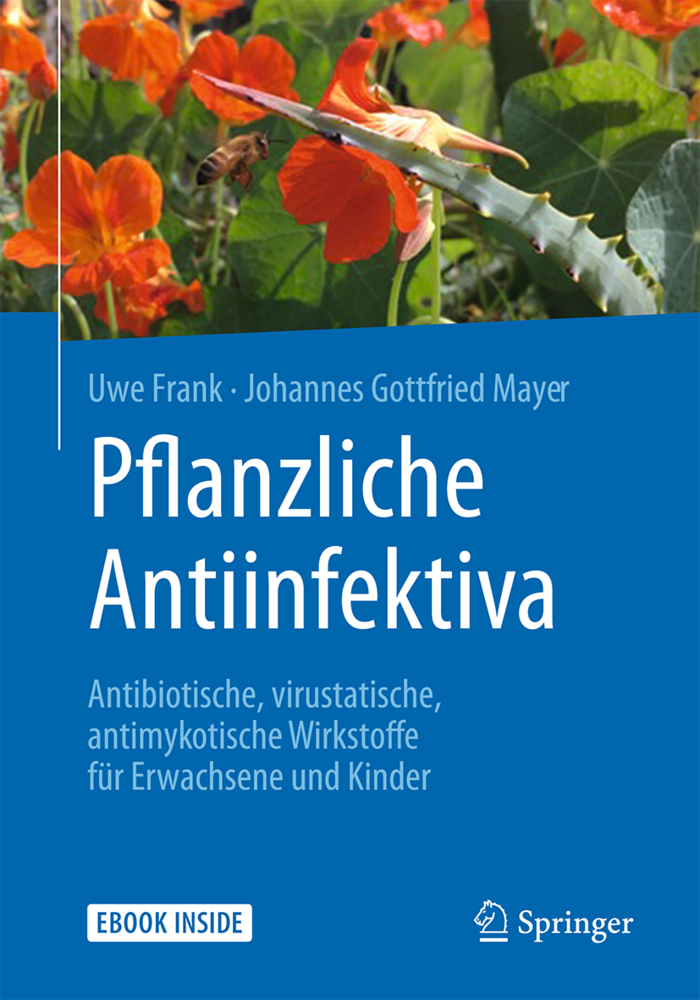Peritoneal Adhesions
Peritoneal Adhesions
Adhesions can cause a wide range of problems, complaints and hazards, even after simple abdominal procedures, such as appendectomy, with complications ranging from recurrent discomfort and pain to intestinal obstruction. Postsurgical adhesions increase the risk of following operations of the abdominal and thoracic cavity. They impair peritoneal dialysis and chemotherapy and play a crucial part in laparoscopic procedures. Adhesion-related problems account for a large amount of clinical work and have a significant socioeconomic impact. This book presents the current knowledge on the aetiopathogenesis of adhesion formation as well as the available methods for their prevention and control. Experts in the field contribute to clinical standards for preventive measures to control the formation of postoperative adhesions
1.2 New Aspects of Peritoneal Pathology
1.3 The Role of Wound Healing in the Formation of Peritoneal Adhesions
1.4 Pathophysiology and Classification of Adhesions
2 Animal Studies on Peritoneal Adhesions
2.1 Neoangiogenesis in Adhesion Formation and Peritoneal Healing
2.2 A Three-Dimensional Cell Culture Method for Studying Peritoneal Adhesions
2.3 Zinc Induces Heat Shock Protein-70 and Metallothionein Expression in the Small Bowel and Protects Against Ischemia
2.4 Anti-interleukin-10: Effect on Postoperative Intraperitoneal Adhesion Formation in a Murine Model
2.5 A New Technique for Surgical Treatment of Large Abdominal Wall Defects: An Experimental Study
2.6 Influence of Peritoneal Transplants in an Experimental Animal Model for the Study of Readhesion Formation
2.7 Postoperative Adhesions - Laparoscopy Versus Laparotomy
3 Aetiology and Pathogenesis of Adhesions
3.1 Studies on the Aetiology and Consequences of Intra-abdominal Adhesions
3.2 Aetio-pathogenesis of Peritoneal Adhesions with Respect to Post-traumatic Fibrinolytic Activity
3.3 Role of Sutures and Suturing in the Formation of Postoperative Peritoneal Adhesions
3.4 Cytokine Response to Elective Surgery: A Possible Mechanism for Intraperitoneal Adhesion Pathogenesis
3.5 Prostaglandin Synthesis of Human Mesothelial Cells In Vitro Is Regulated by Transforming Growth Factor-?1, Tumor Necrosis Factor-?, and Interleukin-1?
3.6 Peritoneal Fibrinolysis and Its Role in Adhesion Formation
3.7 Decreased Fibrinolytic Activity of Human Mesothelial Cells In Vitro Following Stimulation with Transforming Growth Factor-?1, Interleukin-1?, and Tumor Necrosis Factor-?
4.Diagnostic of Peritoneal Adhesions
4.1 Value of Ultrasonography in Diagnosis of Peritoneal Adhesions
4.2 Conventional Radiography and Cross-sectional Imaging Modalities in the Diagnosis of Intestinal Adhesions
5 Complications of Peritoneal Adhesions
5.1 Adhesion Formation Following Incisional Hernia Repair: A Randomized Porcine Model
5.2 The Role of Adhesion Formation in Gynecology and Reproductive Surgery
5.3 Causes of Intestinal Obstruction - A Retrospective Study of 550 Surgical Cases
6 Peritonitis and Sepsis
6.1 The Peritoneal Cytokine Profile in Acute Peritonitis
6.2 Peritoneum and Sepsis: The Role of Sepsis in the Genesis of Peritoneal Adhesions
6.3 Stage-Related Surgical Therapy of General Peritonitis
7 Peritoneal Drainage and Chemotherapy
7.1 Effects and Side Effects of Abdominal Drainage
7.2 Influence of Different Abdominal Drainages on the Bioelectrical and Motor Activities of the Small Bowel
7.3 Problems and Future Directions of Intraperitoneal Therapy with Antineoplastic Agents
8 Pleura, Pericardium, and Peritoneal Dialysis
8.1 Indication, Technique, and Results of Therapeutic Pleurodesis: Formation of Adhesions and Parallels to Abdominal Surgery
8.2 Hazards and Prevention of Postsurgical Pericardial Adhesions
8.3 Intra-abdominal Complications in Peritoneal Dialysis with Special Reference to Peritoneal Fibrosis
9 Treatment of Peritoneal Adhesions
9.1 Indications and Therapeutic Strategy for Intestinal Obstruction Due to Intra-abdominal Adhesions
9.2 CO2 Laser Adhesiolysis
9.3 Laparoscopic Treatment of Peritoneal Adhesions: A Clinical Study of 53 Patients
9.4 Efficiency of Laparoscopy in Treatment of Acute Small Bowel Obstruction Caused by Adhesions
9.5 A New Probe Optimizes Closed Decompression and TemporaryIntestinal Splinting in Small Intestine Ileus
9.6 Benefit and Risk of Long Intestinal Tubes in Intestinal Obstruction
10 Prevention and Control of Adhesion Formation
10.1 The Management of Adhesive Disease
10.2 Adhesion Prophylaxis in Gynecology
10.3 Prevention of Postoperative Formation and Reformation of Pelvic Adhesions
10.4 Immunomodulation of the Acute Postinjury Phase of Mesothelial Repair
10.5 Prevention of Adhesions in Rabbits by Intraabdominal Application of Lipid Compounds
10.6 Two-Phase In Vivo Comparison Studies of the Tissue Response to Polypropylene, Polyester, and Expanded Polytetrafluoroethylene Grafts Used in the Repair of Abdominal Wall Defects
10.7 Evaluation of Seprafilm Bioresorbable Membrane in a Rat Cecal Abrasion Model
10.8 Use of Adhesion Prevention Barriers in Gynecological Surgery.
1 Basics on Adhesion Formation
1.1 Serous Membranes and Their Development, Structure, and Topography1.2 New Aspects of Peritoneal Pathology
1.3 The Role of Wound Healing in the Formation of Peritoneal Adhesions
1.4 Pathophysiology and Classification of Adhesions
2 Animal Studies on Peritoneal Adhesions
2.1 Neoangiogenesis in Adhesion Formation and Peritoneal Healing
2.2 A Three-Dimensional Cell Culture Method for Studying Peritoneal Adhesions
2.3 Zinc Induces Heat Shock Protein-70 and Metallothionein Expression in the Small Bowel and Protects Against Ischemia
2.4 Anti-interleukin-10: Effect on Postoperative Intraperitoneal Adhesion Formation in a Murine Model
2.5 A New Technique for Surgical Treatment of Large Abdominal Wall Defects: An Experimental Study
2.6 Influence of Peritoneal Transplants in an Experimental Animal Model for the Study of Readhesion Formation
2.7 Postoperative Adhesions - Laparoscopy Versus Laparotomy
3 Aetiology and Pathogenesis of Adhesions
3.1 Studies on the Aetiology and Consequences of Intra-abdominal Adhesions
3.2 Aetio-pathogenesis of Peritoneal Adhesions with Respect to Post-traumatic Fibrinolytic Activity
3.3 Role of Sutures and Suturing in the Formation of Postoperative Peritoneal Adhesions
3.4 Cytokine Response to Elective Surgery: A Possible Mechanism for Intraperitoneal Adhesion Pathogenesis
3.5 Prostaglandin Synthesis of Human Mesothelial Cells In Vitro Is Regulated by Transforming Growth Factor-?1, Tumor Necrosis Factor-?, and Interleukin-1?
3.6 Peritoneal Fibrinolysis and Its Role in Adhesion Formation
3.7 Decreased Fibrinolytic Activity of Human Mesothelial Cells In Vitro Following Stimulation with Transforming Growth Factor-?1, Interleukin-1?, and Tumor Necrosis Factor-?
4.Diagnostic of Peritoneal Adhesions
4.1 Value of Ultrasonography in Diagnosis of Peritoneal Adhesions
4.2 Conventional Radiography and Cross-sectional Imaging Modalities in the Diagnosis of Intestinal Adhesions
5 Complications of Peritoneal Adhesions
5.1 Adhesion Formation Following Incisional Hernia Repair: A Randomized Porcine Model
5.2 The Role of Adhesion Formation in Gynecology and Reproductive Surgery
5.3 Causes of Intestinal Obstruction - A Retrospective Study of 550 Surgical Cases
6 Peritonitis and Sepsis
6.1 The Peritoneal Cytokine Profile in Acute Peritonitis
6.2 Peritoneum and Sepsis: The Role of Sepsis in the Genesis of Peritoneal Adhesions
6.3 Stage-Related Surgical Therapy of General Peritonitis
7 Peritoneal Drainage and Chemotherapy
7.1 Effects and Side Effects of Abdominal Drainage
7.2 Influence of Different Abdominal Drainages on the Bioelectrical and Motor Activities of the Small Bowel
7.3 Problems and Future Directions of Intraperitoneal Therapy with Antineoplastic Agents
8 Pleura, Pericardium, and Peritoneal Dialysis
8.1 Indication, Technique, and Results of Therapeutic Pleurodesis: Formation of Adhesions and Parallels to Abdominal Surgery
8.2 Hazards and Prevention of Postsurgical Pericardial Adhesions
8.3 Intra-abdominal Complications in Peritoneal Dialysis with Special Reference to Peritoneal Fibrosis
9 Treatment of Peritoneal Adhesions
9.1 Indications and Therapeutic Strategy for Intestinal Obstruction Due to Intra-abdominal Adhesions
9.2 CO2 Laser Adhesiolysis
9.3 Laparoscopic Treatment of Peritoneal Adhesions: A Clinical Study of 53 Patients
9.4 Efficiency of Laparoscopy in Treatment of Acute Small Bowel Obstruction Caused by Adhesions
9.5 A New Probe Optimizes Closed Decompression and TemporaryIntestinal Splinting in Small Intestine Ileus
9.6 Benefit and Risk of Long Intestinal Tubes in Intestinal Obstruction
10 Prevention and Control of Adhesion Formation
10.1 The Management of Adhesive Disease
10.2 Adhesion Prophylaxis in Gynecology
10.3 Prevention of Postoperative Formation and Reformation of Pelvic Adhesions
10.4 Immunomodulation of the Acute Postinjury Phase of Mesothelial Repair
10.5 Prevention of Adhesions in Rabbits by Intraabdominal Application of Lipid Compounds
10.6 Two-Phase In Vivo Comparison Studies of the Tissue Response to Polypropylene, Polyester, and Expanded Polytetrafluoroethylene Grafts Used in the Repair of Abdominal Wall Defects
10.7 Evaluation of Seprafilm Bioresorbable Membrane in a Rat Cecal Abrasion Model
10.8 Use of Adhesion Prevention Barriers in Gynecological Surgery.
Treutner, Karl-Heinz
Schumpelick, Volker
| ISBN | 978-3-540-61192-9 |
|---|---|
| Artikelnummer | 9783540611929 |
| Medientyp | Buch |
| Copyrightjahr | 1997 |
| Verlag | Springer, Berlin |
| Umfang | XX, 385 Seiten |
| Abbildungen | XX, 385 p. 97 illus. |
| Sprache | Englisch |

